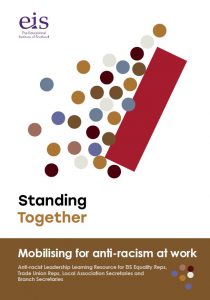On this page you will find learning material developed from these sessions, including poetry from Hannah Lavery, learning videos from SAMEE, and a written learning resource giving practical guidance to support you in taking anti-racism forward in your workplace.
“What I know is that an inchoate desire for a future other than the one that seems to be forming our days brings me to a seat around any table to lean forward, to hear, to respond, to await response from any other. Tell me something, one thing, the thing, tell me that thing”- Claudia Rankine.
“Children targeted by racism have higher rates of depression, anxiety, and behaviour problems. Experiences of racial discrimination can make children feel less connected and less worthwhile… a child may react by withdrawing from activities they like or speaking up less in class.” Over time, learning suffers, and often, future opportunities as well…And racism is stressful — for children targeted by racist acts as well as those who observe them. When asked to recall a racist event they’d witnessed as a child, young adults had stress responses comparable to first responders after major disasters. Over time, the hormones the body releases under stress can damage a child’s physical and emotional health”
“All education is political. What we teach students from the bedrock of their understanding of the world” Buzzed
“… there is a chance to change this narrative. It’s not about guilt or one-dimensional stereotypes: if histories of exclusion, colonialism and the fierce resistance to much of this were more widely known, it could mean a more nuanced, inclusive understanding of the present.” Maya Goodfellow
*Please be advised that sections of this clip contain swearing*
What should go in a Race Action Plan for Headteachers, Equality Reps and Local Association Secretaries to take anti-racist action, and who should be involved?
